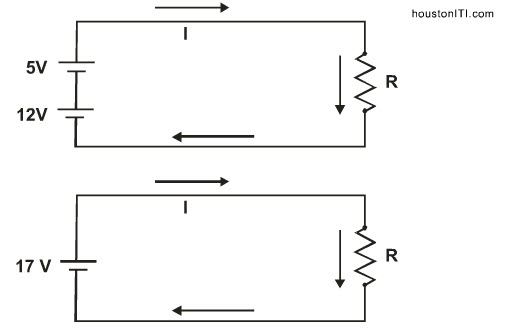 |
Batteries - continued
This figure shows two of the many ways batteries can be connected.
The top figure shows two batteries connected in series in an additive fashion. One of the batteries is rated at 5V and the other at 12V.
Notice how it is done. The anode of one battery is connected to the cathode of the other.
In this configuration, the voltage which will push current through the resistance is 5 + 12 = 17 volts. To simplify the upper circuit we can replace the top circuit with the one given below. In other words we are saying that if two batteries are connected in this fashion, then they can be replaced in the diagram by one larger battery.
In the lower diagram, the battery is known as the “equivalent” battery. It really means two things:
a. The equivalent battery will cause the circuit to behave in exactly the same manner as before. The resistance will “feel” the same voltage being applied to it.
b. To help us in the calculations, we can replace two batteries with one. Remember, in our formulas we have a term “V” for voltage. To use the formula we need the voltage of the equivalent battery.